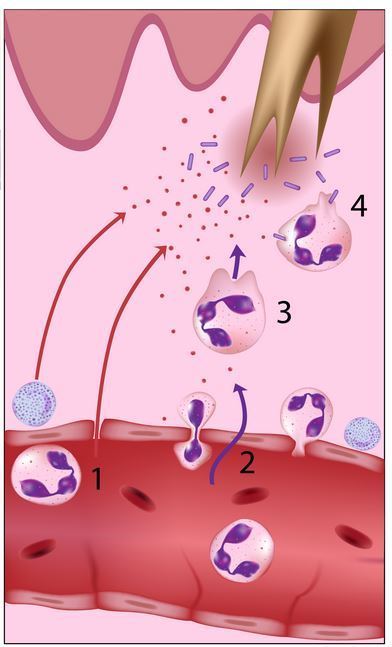21.3 Human internal defense

White blood cells move along blood and lymph, but they are also able to penetrate other cells into other tissues in the body.
White blood cells are especially abundant in the liver and in lymph nodes. Some white blood cells are phagocytes.
Some white blood cells, in turn, produce antibodies. Antibodies are used to label harmful targets on eating cells that can destroy them.
Some of the white blood cells that produce antibodies remain as memory cells after the attack of the pathogens. The next time the memory cells recognize the pathogen and quickly produce an antibody. In this case, the person does not even have time to get the symptoms of the disease caused by the bacterium but heals before the onset of the disease (immunity).
In the drawing on the right, a the stick has pierced the skin, making bacteria enter the body. White blood cells migrate from the capillary to the tissue (1 and 2) and destroy bacteria (3 and 4).